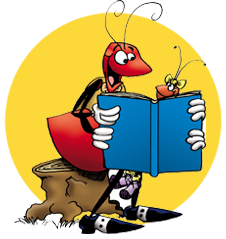Fluency Building
 BUILDING FLUENCY IN YOUR CURRENT LESSONS
BUILDING FLUENCY IN YOUR CURRENT LESSONS
| NOTE: The importance of reading fluency is supported by research. Fluency is also identified in the Common Core State Standards as a foundational skill. |
|---|
Fluency involves reading with accuracy, expression (prosody), and an appropriate rate. In Read Well, students work first on accuracy, then accuracy and expression, and finally on accuracy, expression, and rate. Some students do well with accuracy but struggle with fluency. When students are accurate, celebrate! All is going well—your students just need a fluency boost. For groups that are not fluent, follow the steps below.
Step 1. Monitor practice opportunities in your current lessons. Audio record a lesson.
Count repetitions per sound. (Rotate easy sounds in and out of practice so you are working with only 12–16 sounds per lesson. Maintain practice on vowels.)
Work for high levels of automaticity—speed of accurate recognition. On isolated sound probes, students in kindergarten should be able to accurately identify about 40 sounds per minute, and by the end of first grade, about 60 sounds per minute.Tricky Words. Do not spend time practicing all of the Tricky Words included in the Sound Cards. Practice only words that students have difficulty with or respond to slowly.
Count repetitions on words. Before you leave the decoding lesson, you want a minimum of 3–4 correct repetitions per sound or word. Examples for repeating practice follow.
- Read the underlined sound. Sound it out. Read the word (1 rep). Go to the next word . . .
- Read the underlined sound two times and then the word.
- Go back to the beginning of the row or column: Mix group and individual turns.
- Go back to the beginning of the row or column. Your turn. My turn.
- Go back to the beginning of the row or column. I'm going to count to three. 1, 2, 3. Read the word.
- Go back to the beginning of the row or column, establish a pace, and have students read the whole row or column.
- Read the column from bottom up.
- Culminating activity: Have students read a whole box (all the columns or rows on the Decoding Practice from start to finish). Congratulate students. Practice pays off!
- Start each lesson with a repeated reading of the previous day’s solo story or use solo stories from previous units (or Extra Practice passages). As students are transitioning to reading group, teach students the procedure of immediately rereading the previous day’s solo story.
- Have students practice solo stories during independent work. Set up a marking system so they can indicate that they completed three repeated readings.
- Read for accuracy—Mark a tally sheet.
- Read for accuracy and expression—Mark a tally sheet.
- Read for accuracy and expression and rate—Mark a tally sheet.
BUILDING FLUENCY FOR INTERVENTION
| Reading is the priority skill that allows academic success. Without a foundation in independent reading skills, a child is at risk of academic failure. |
|---|
Drop back 3 to 5 units at another time during the day for ten-minute review. Automaticity is built on easy skills.
Step 1. Have students practice skills for greater and greater fluency. Celebrate! (Wow! That’s easy now)! Here are some suggested activities:
- Practice for greater automaticity in sound recognition by identifying sounds that students are accurate on and having students work to recognize sounds at a faster rate.
- Practice sounding out words that students are accurate on. Work for automaticity in sounding out.
- Practice reading words without sounding out. Give students a list of decodable words. Determine their current rate of recognition and gradually set higher and higher fluency goals.
- Model sentences or a short passage at a rate slightly above students. Have students read. Time individuals and chart.
- Time a group read.
- Practice reading words without sounding out. Give students a list of decodable words. Determine their current rate of recognition and gradually set higher and higher fluency goals.
- Have a parent volunteer or cross-age tutor listen to students read old solo stories. Provide star charts for solos completed. The one-to-one reading is motivating and helps build accountability with young students.
- Audio record students: Use a smartphone or other device with audio recording capabilities to record individuals. Students will practice to get a great recording to email home.
- Practice reading words without sounding out. Give students a list of decodable words. Determine their current rate of recognition and gradually set higher and higher fluency goals.
If you are looking for some variety and new passages for fluency building, check out Read Well Fluency Boosters (developed by Marilyn Sprick and Ann Watanabe).
Learn More
ZIP-A-DEE-DOO-DAH! A SAMPLE JELL-WELL PLAN
The term Jell Well is our term for going back for a systematic review—generally to build fluency on known skills. Jell Wells are a perfect way to review at the beginning of the year, to build fluency during the year, and to firm students up at the end of the year. The trick is to go back far enough that you can build automaticity on skills and fluency on passages.
We’ve provided a PDF of a Zip-a-Dee-Doo-Dah PowerPoint that you can download (see link below). The plan can be used for Read Well 1 students and applied to Read Well K students. For students in Read Well 1 Plus or Read Well 2, stay tuned.
PDF of PowerPoint
